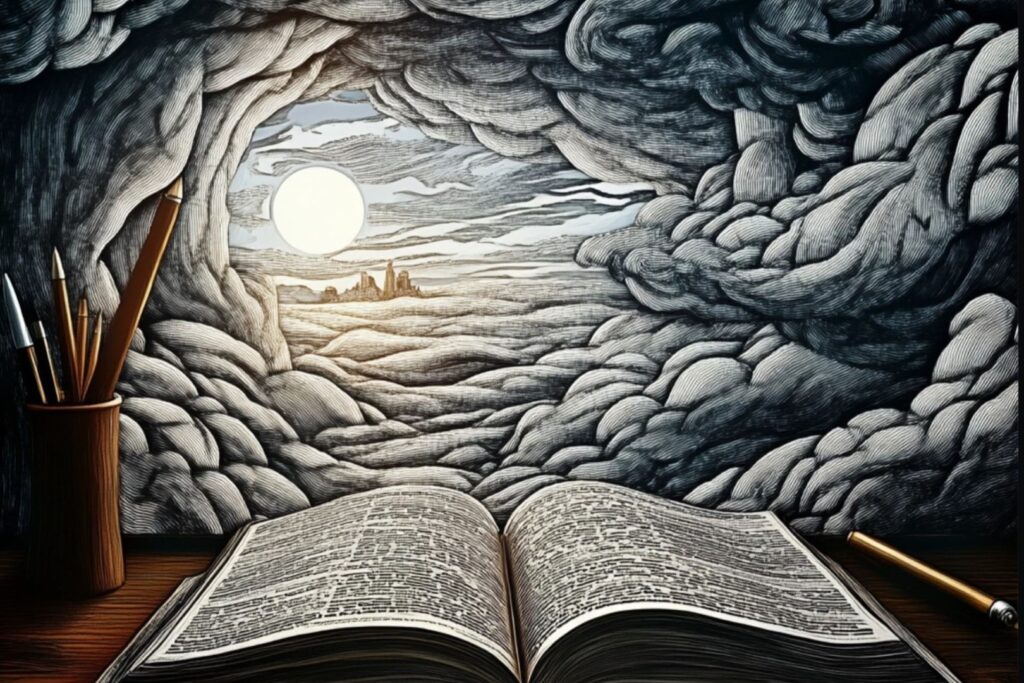Genre classification in novels does more than serve marketing purposes; it gives writers a framework and restrictions that help guide their creativity. Rather than facing an intimidating blank page, writers use genre conventions to focus their ideas and inspire fresh approaches. First classified by Aristotle using principles of biological taxonomy, literary genres are now defined by the technique, tone, content, or the length of the work.
Genres are also valuable for understanding an essential component to your story: your readership —this mysterious and elusive other half, with whom you share custody of the book. A genre tells you about their taste, what they expect, what they’re in the mood for. By meeting these expectations, you draw readers in; then, once you are certain they’re rested and at ease, surprise them.
Genres also serve as bridges from the familiar to the new. Truly original concepts can be hard to sell or connect with as readers need a familiar starting point to immerse themselves into the book. Literary agents often look for books that put new spins on classic themes, allowing them to pitch the stories as “this meets that.” Most readers are creatures of comfort; they prefer to be gently escorted from familiar territory to something new, rather than being abruptly dropped into a foreign land from a flying helicopter. This is why detective stories and procedurals are so popular: they provide recognizable settings and formulas in which to explore new characters.
In genre fiction, readers typically expect closure—mysteries are resolved, lovers are united, the monster is defeated. Literary fiction, on the other hand, leaves questions unanswered, encouraging reflection and interpretation. While genre fiction appeals with relatable themes, literary fiction leans toward unique or avant-garde experiences. You are not constricted to either; you can add literary elements to a mystery novel or supernatural elements to literary fiction.
Here are common plot structures used by various literary genres:
Mystery/Crime
Mysteries follow a straight-line plot from crime to solution. The plot typically starts with a murder or mystery, followed by an investigation including clues and misdirection, and ends with a clear resolution that wraps up the many threads. In mystery, actions and settings are described in detail to plant potential clues for readers to piece together. It focuses on creating a stream of images instead of a stream of consciousness and uses dialogue for narration.
Fantasy/Adventure:
Many fantasy and quest stories follow a “hero’s journey,” where a regular person embarks on an adventure, faces challenges, and ultimately confronts a major villain or obstacle. They return changed, often wiser or stronger. The road is filled with obstacles to overcome, and there is usually a prize at the end.
Thriller/Suspense
Thrillers use a non-linear structure, with flashbacks or shifting viewpoints to build tension or reveal critical information unknown to the hero. The plot starts with a high-stakes event, leading to escalating suspense through twists and close calls until the hero reaches the truth. In a thriller, we know who the villain is.
Science Fiction
Sci-fi stories are usually told linearly with a three-act structure: an introduction to the world, a central discovery, followed by conflict over its implications. The climax often addresses the ethical or existential dilemmas posed by technology, with a resolution that reflects on the future.
Horror
Horror stories follow a linear structure, starting from a seemingly normal situation and gradually building dread. Key elements include character isolation, the introduction of the threat, and rising tension until a climactic confrontation occurs. Endings are often unsettling or ambiguous.
Literary Fiction
Literary fiction focuses on a character’s inner struggles, often using a non-linear timeline. The plot moves between past and present, with a climax of self-realization. Resolutions tend to leave readers with mixed feelings, unresolved issues, or open questions.
In case of doubt, write a mystery. The restrictive plot formula will help you move forward and allow you to focus on other aspects of the novel, like characters and setting. Hook readers with a familiar formula, then surprise them.
